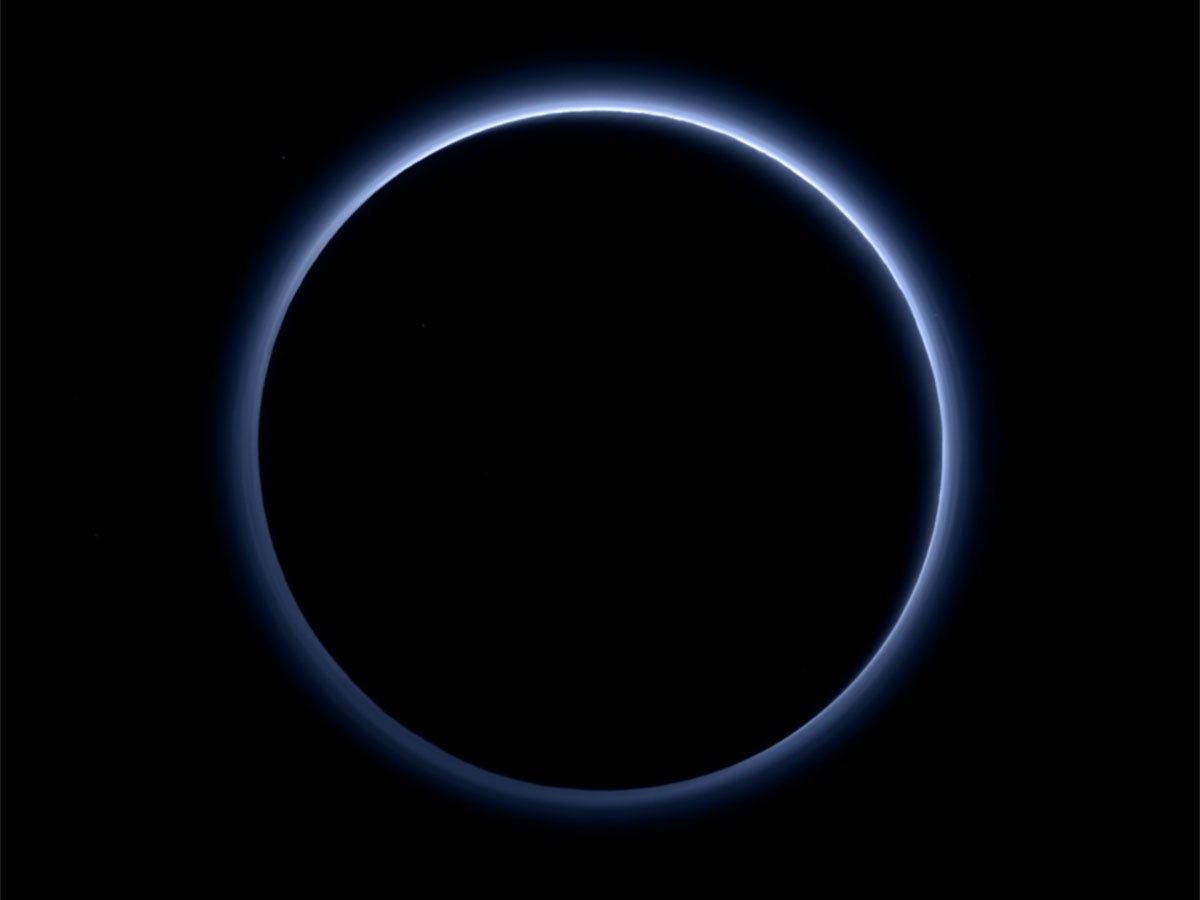Nasa announcement: Pluto has blue skies and water ice, agency says, as it reveals stunning pictures of dwarf planet
The New Horizons craft has sent back colour images of the haze that surrounds the planet for the first time

Your support helps us to tell the story
From reproductive rights to climate change to Big Tech, The Independent is on the ground when the story is developing. Whether it's investigating the financials of Elon Musk's pro-Trump PAC or producing our latest documentary, 'The A Word', which shines a light on the American women fighting for reproductive rights, we know how important it is to parse out the facts from the messaging.
At such a critical moment in US history, we need reporters on the ground. Your donation allows us to keep sending journalists to speak to both sides of the story.
The Independent is trusted by Americans across the entire political spectrum. And unlike many other quality news outlets, we choose not to lock Americans out of our reporting and analysis with paywalls. We believe quality journalism should be available to everyone, paid for by those who can afford it.
Your support makes all the difference.Nasa has unveiled the first colour pictures of the haze that surrounds Pluto, along with pictures of patches of water ice on the dwarf planet.
The reveal drew early attention this week as the leader of the New Horizons mission said there would be an “amazing” announcement. Alan Stern described the planet as “alive” — prompting many to hope for a big announcement today.
The colour pictures show for the first time that the hazes are a bright blue.
“Who would have expected a blue sky in the Kuiper Belt? It’s gorgeous,” said Alan Stern New Horizons principal investigator from Southwest Research Institute (SwRI), Boulder, Colorado, in a statement.
The blue in the picture allows scientists to judge how exactly it is made.
“That striking blue tint tells us about the size and composition of the haze particles,” said science team researcher Carly Howett, also of SwRI. “A blue sky often results from scattering of sunlight by very small particles. On Earth, those particles are very tiny nitrogen molecules. On Pluto they appear to be larger — but still relatively small — soot-like particles we call tholins.”
Nasa also said that it had found small, exposed regions of ice on the dwarf planet. Those bits of ice correlate with previously seen red patches on the surface — and scientists aren’t sure why.

"I’m surprised that this water ice is so red,” says Silvia Protopapa, a science team member from the University of Maryland, College Park. “We don’t yet understand the relationship between water ice and the reddish tholin colorants on Pluto's surface.”
The water only appears in patches. Scientists are planning to explore why exactly those patches form, and why they appear where they do.
“Large expanses of Pluto don’t show exposed water ice,” said science team member Jason Cook, of SwRI, “because it’s apparently masked by other, more volatile ices across most of the planet. Understanding why water appears exactly where it does, and not in other places, is a challenge that we are digging into.”
Join our commenting forum
Join thought-provoking conversations, follow other Independent readers and see their replies
Comments